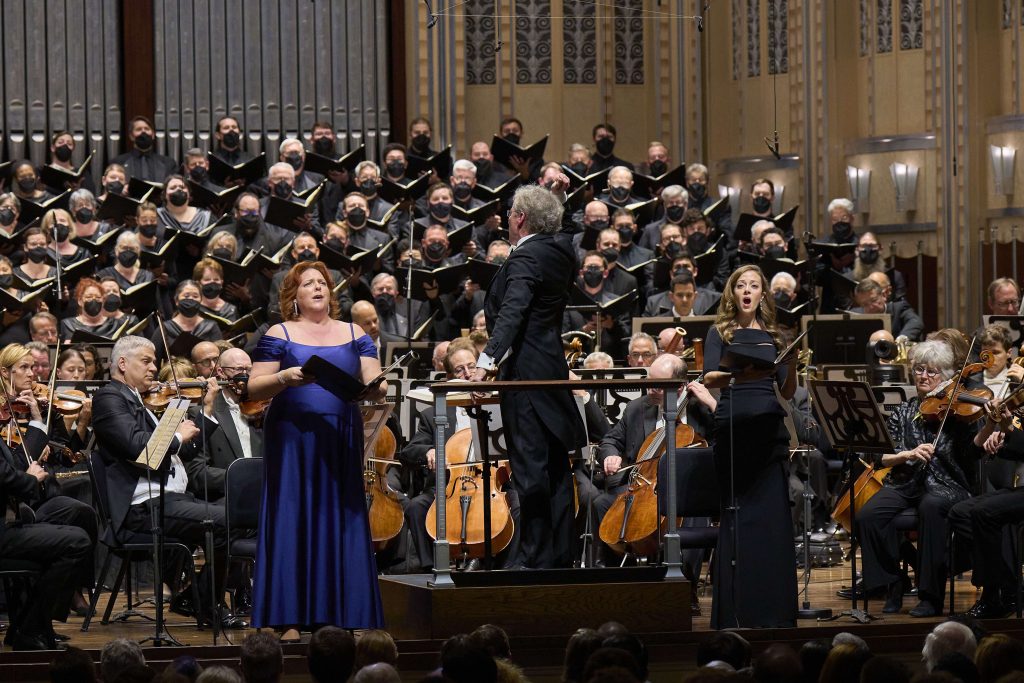by Stephanie Manning
It’s a sure sign that Severance Hall is going to be packed when the intersection of Euclid Avenue and East Boulevard is clogged six ways to Sunday — or rather, Thursday.
It wasn’t just the traffic. Everything at The Cleveland Orchestra’s concert on September 29 was busier than usual — more people in the audience, more musicians on stage, and one of the longest standing ovations in a while.
Franz Welser-Möst led the Orchestra in the first performance of its 105th season, a stirring account of Gustav Mahler’s Symphony No. 2. At one hour and 20 minutes, the work is long enough to fill a whole program — and the Orchestra smartly did just that, forgoing any preludes or overtures in favor of presenting the one work without intermission.
From the opening measures of the symphony, subtitled “Resurrection,” the string section’s incredible unisons were on display, presenting a unified approach to timing, volume, and intonation. The rest of the orchestra only added to the precise style of playing, despite Welser-Möst’s at times perplexing and overexcited movements from the podium.
Especially loud swells of sound were created by the woodwinds and brass putting their bells up, an effect which was particularly thrilling during the work’s signature chromatic wail — a dissonant outburst of despair first heard in the third movement.
The most impressive moments, however, were not necessarily the most brash. The second movement in particular contained some deceptively difficult passages executed cleanly, like the quiet, crisp, repeated horn notes, or the high-octave flute floating just above gentle pizzicatos.
After choir and soloists filed on stage between the first and second movements, the soloists were in the unenviable position of having to start singing after long periods of silence. But you would have never guessed how hard that task was when contralto Marie-Nicole Lemieux stood and began to sing. Her performance brought a beautifully haunting quality to the fourth movement, and her rich vocal color rose all the way to the balcony.
With its building intensity and epic catharsis, the fifth movement earned its place as the culmination of the entire evening. Though the coordination of the offstage brass and percussion with the onstage performers was not always precise, the finale was riveting — accented by visceral crashes from the cymbals, piercing high notes from the trumpets, and a flurry of mallets in the percussion. The choir, along with soprano soloist Lauren Snouffer, soared over the orchestra. In the face of such an overwhelming expression of emotion, it was impossible not to be moved.
As concertgoers began to file out after four rounds of bows, many stopped by the lobby (if they hadn’t already) to observe a piece of Mahler history — the composer’s original manuscript for the Second Symphony, a gift to the Orchestra that will now be housed in the Cleveland Museum of Art. Both this acquisition and the quality of the evening’s performance seem to predict more good things in the season ahead.
Photo courtesy of Roger Mastroianni
Published on ClevelandClassical.com October 5, 2022.
Click here for a printable copy of this article




